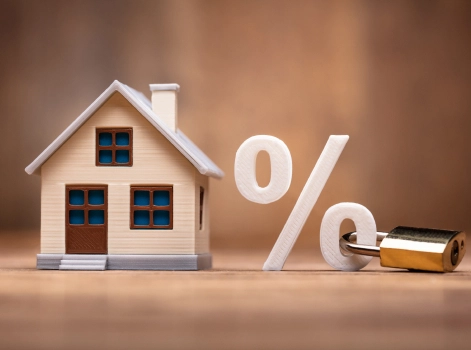What is a home loan redraw facility?
A redraw facility is a home loan feature that lets you withdraw any additional repayments you’ve made over the required minimum repayments. These extra repayments reduce your loan balance and interest, but if needed, you can draw them back to use for personal expenses like renovations, holidays, or emergencies.
Your extra repayments form your ‘available redraw’, which is the amount you can access.
This facility is usually available on most variable rate home loans. While less common, some lenders such as St.George and Westpac also offer redraw on certain flexible fixed rate loans.
How Does A Home Loan Redraw Work?
A home loan redraw facility works by letting you access extra repayments you’ve made on top of your minimum monthly loan amount. For example, if your minimum repayment is $2,398 and you pay $2,598, the extra $200 goes into your available redraw balance. These extra repayments reduce your loan principal, helping you save on interest and pay off your loan sooner.
Over time, your redraw balance grows and becomes a pool of funds you can access if needed. You can choose to withdraw a lump sum for things like renovations or emergencies, reduce your future repayments by drawing from the balance, or keep paying the same amount to pay off your home loan faster.
For example, if you have a $400,000 mortgage with a 30-year loan term at an interest rate of say 6%, your minimum repayments will be $2,398. If you make additional repayments of $200 on top of your monthly minimum repayments, you’re saving $98,277 in interest and shaving off 5.5 years from your home loan term.
You can access your redraw through your lender’s app or online platform. Remember that when you redraw, your loan balance increases by the amount you withdraw, which means you may start paying more interest again. And once your home loan is fully repaid, both your loan balance and any available redraw will be zero.
Helpful Tip
If you’re close to paying off your home loan, consider switching to interest-only repayments and leaving a small balance (e.g. $500). This will prevent your loan account from closing automatically with the last repayment and keep access to equity open for future use.
Important: Not all lenders allow this, and switching to interest-only usually requires a full loan reassessment. Always check with your lender first.
Redraw Vs Offset Account: What’s The Difference?
While both redraw facilities and offset accounts help you reduce the interest you pay on your home loan, they function differently.
A redraw facility lets you access extra repayments you’ve made toward your loan, though access can be limited by the lender. In contrast, an offset account is a separate transaction account linked to your mortgage, giving you full control and immediate access to your money while still helping to reduce interest.
Offset accounts are better for day-to-day flexibility, while redraw facilities suit those who want to stay disciplined and reduce their loan faster. The right option depends on your financial habits and goals.
If you’re relying on your redraw funds as an emergency savings buffer during this crisis, it may be better to transfer those funds to an offset account or your savings account.
Read our full guide Offset Account vs Redraw Facility, for a more detailed breakdown.
Pros and Cons Of Using A Redraw Facility
Pros
- Saves you interest by reducing your loan balance and the interest charged.
- Provides access to funds when needed without relying on loans or credit cards.
- No need to refinance or restructure your loan to access extra repayments.
- Encourages financial discipline by limiting instant access to extra funds.
- May have no or low fees, with some lenders offering minimal or no transaction costs.
Cons
- Redraw fees may apply for each transaction.
- It is relatively harder to access than funds in your offset account, with some requests taking 1–2 business days or needing manual approval.
- Your lender can decline your request to access your redraw. It is absolutely based on the lender’s discretion.
- Minimum redraw amounts may apply (e.g., $500), limiting small withdrawals.
- In certain situations (like arrears or default), access may be restricted.
- There are potential tax implications for investors if funds are redrawn for personal use.
FAQs
Can I Access My Redraw Funds Anytime?
In most cases, yes, but it depends on your lender. Some banks allow instant redraws via their app, while others may take up to two business days or set minimum redraw amounts.
Are There Fees For Using A Redraw Facility?
Can Banks Take Your Redraw Money?
Is It Better To Have Money In Redraw Or Offset?
What Happens To Redraw When You Refinance?
What Happens To Redraw When The Loan Is Paid Off?
Does Redraw Affect My Loan Term Or Repayments?
How Can I Access My Redraw?
When Is Redraw Not Available?
Still need answers? We're here to help!
Ask an expertOur team of mortgage experts will assist you within 24 hours.
